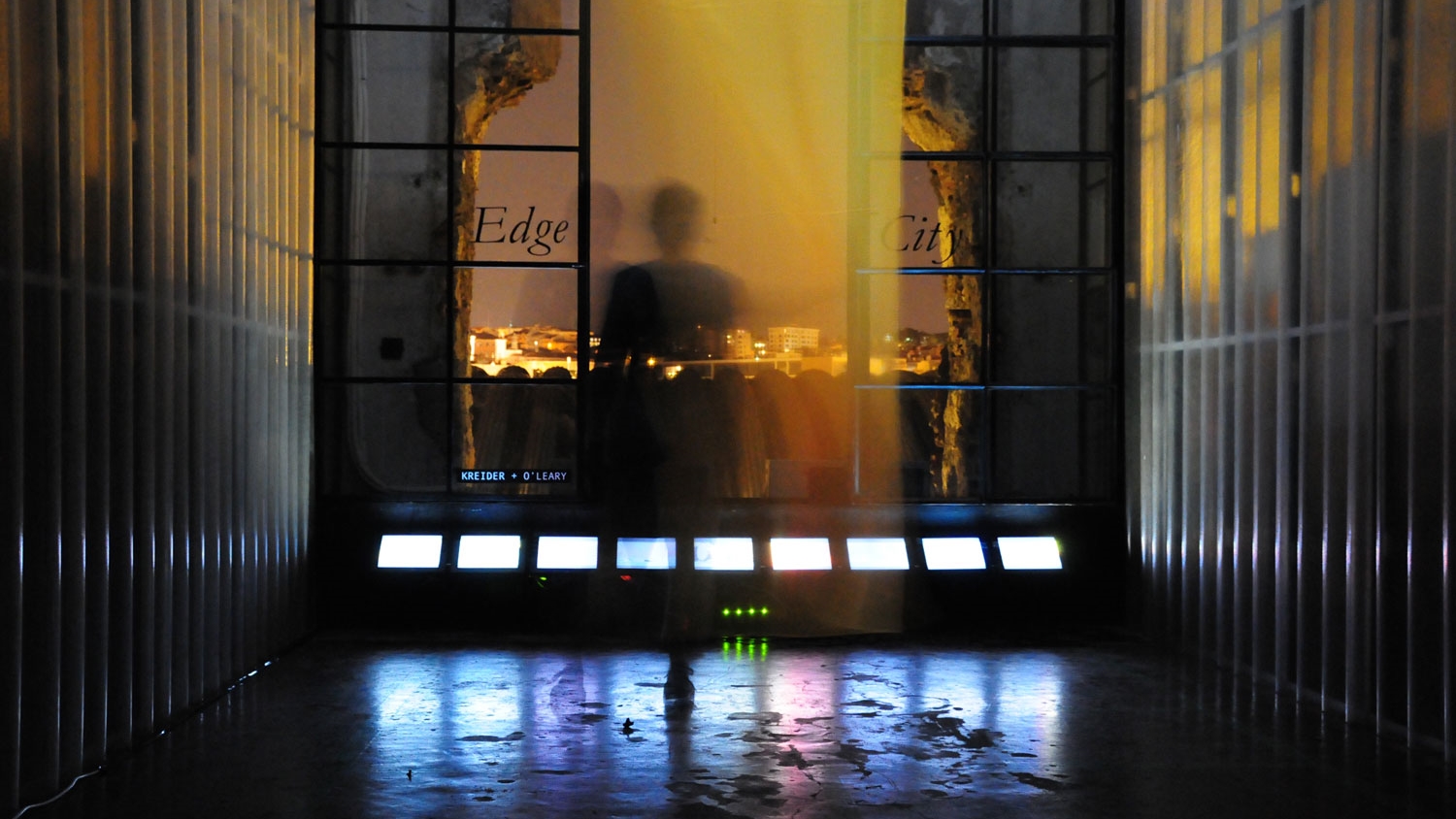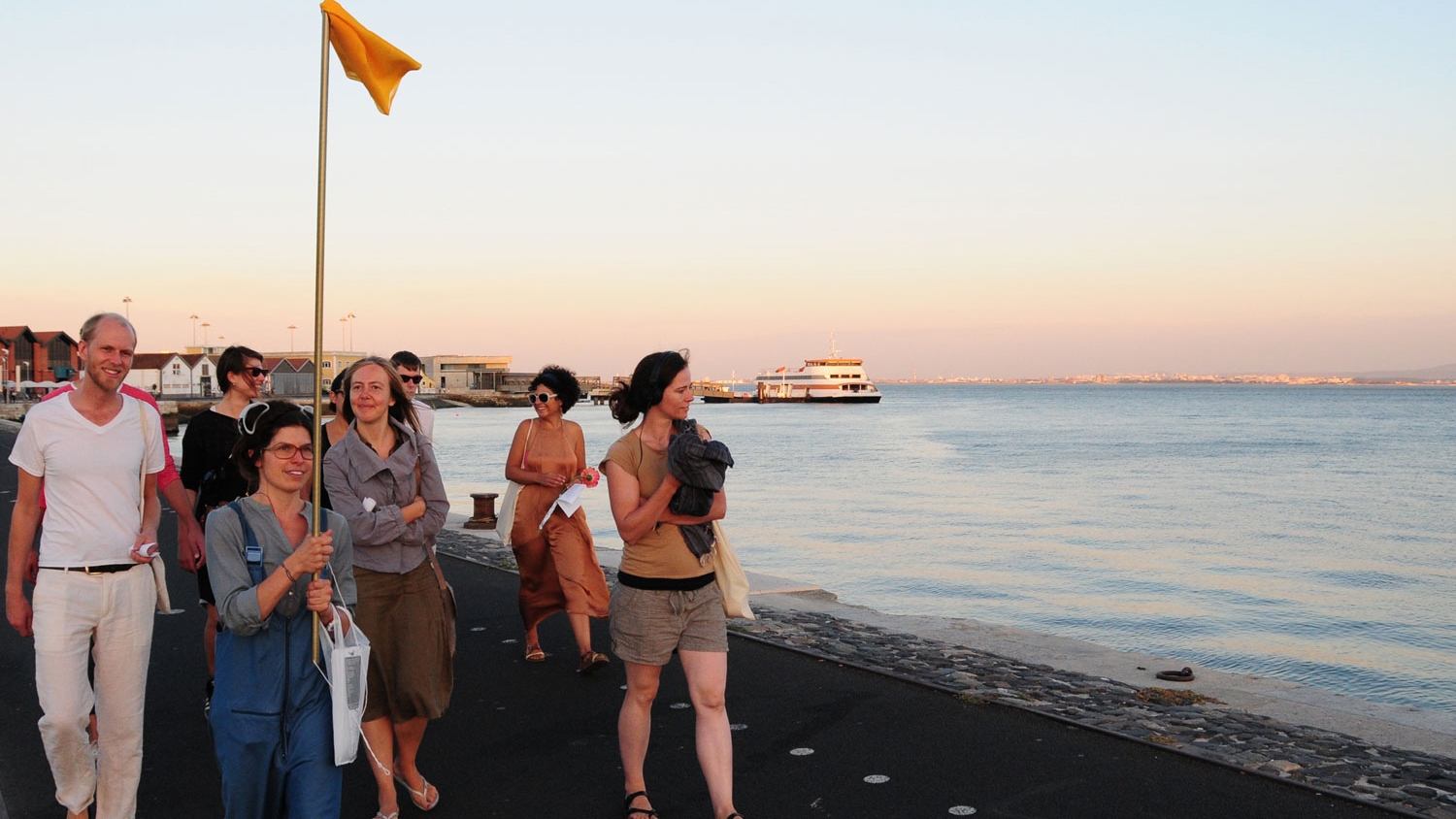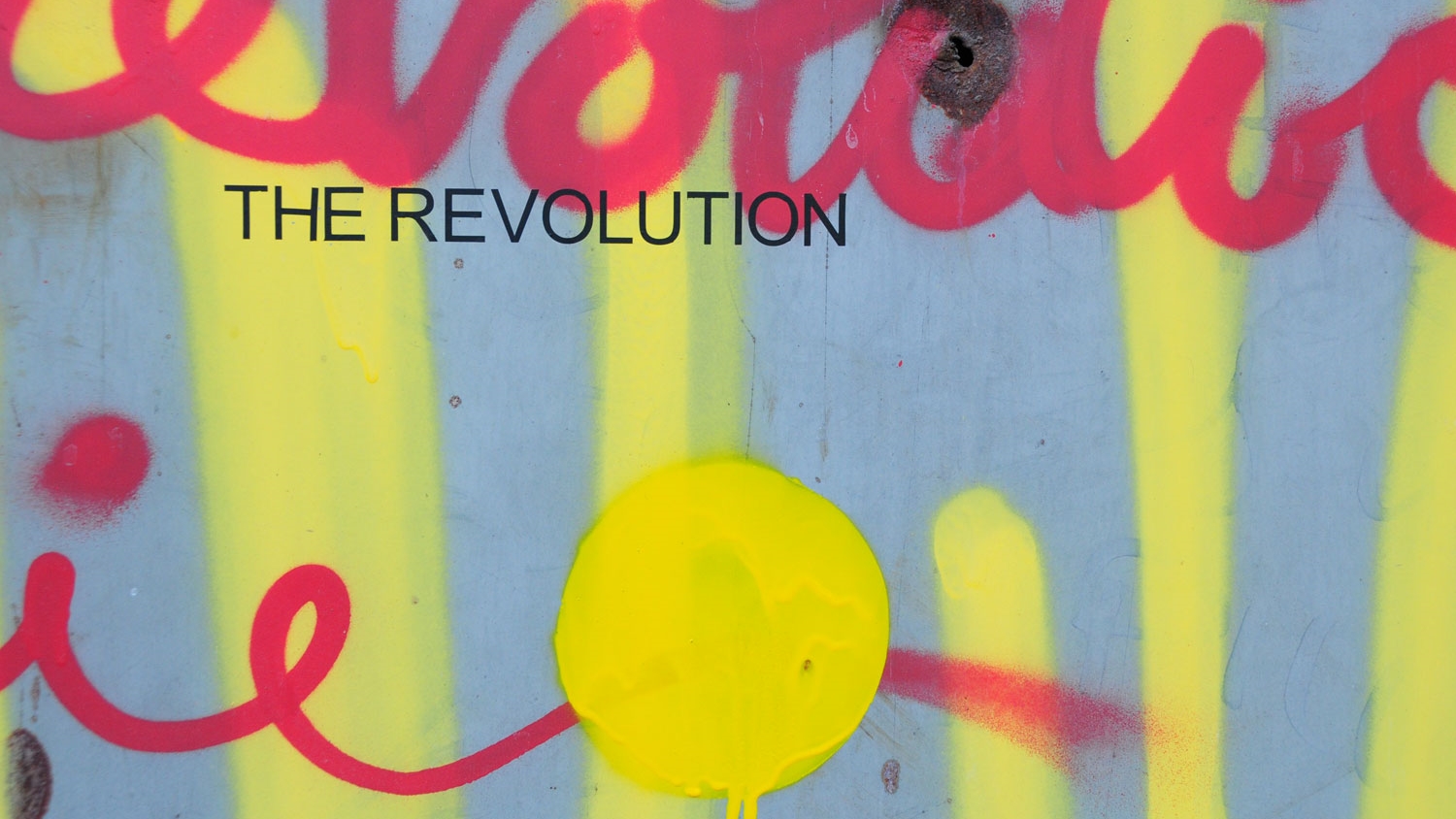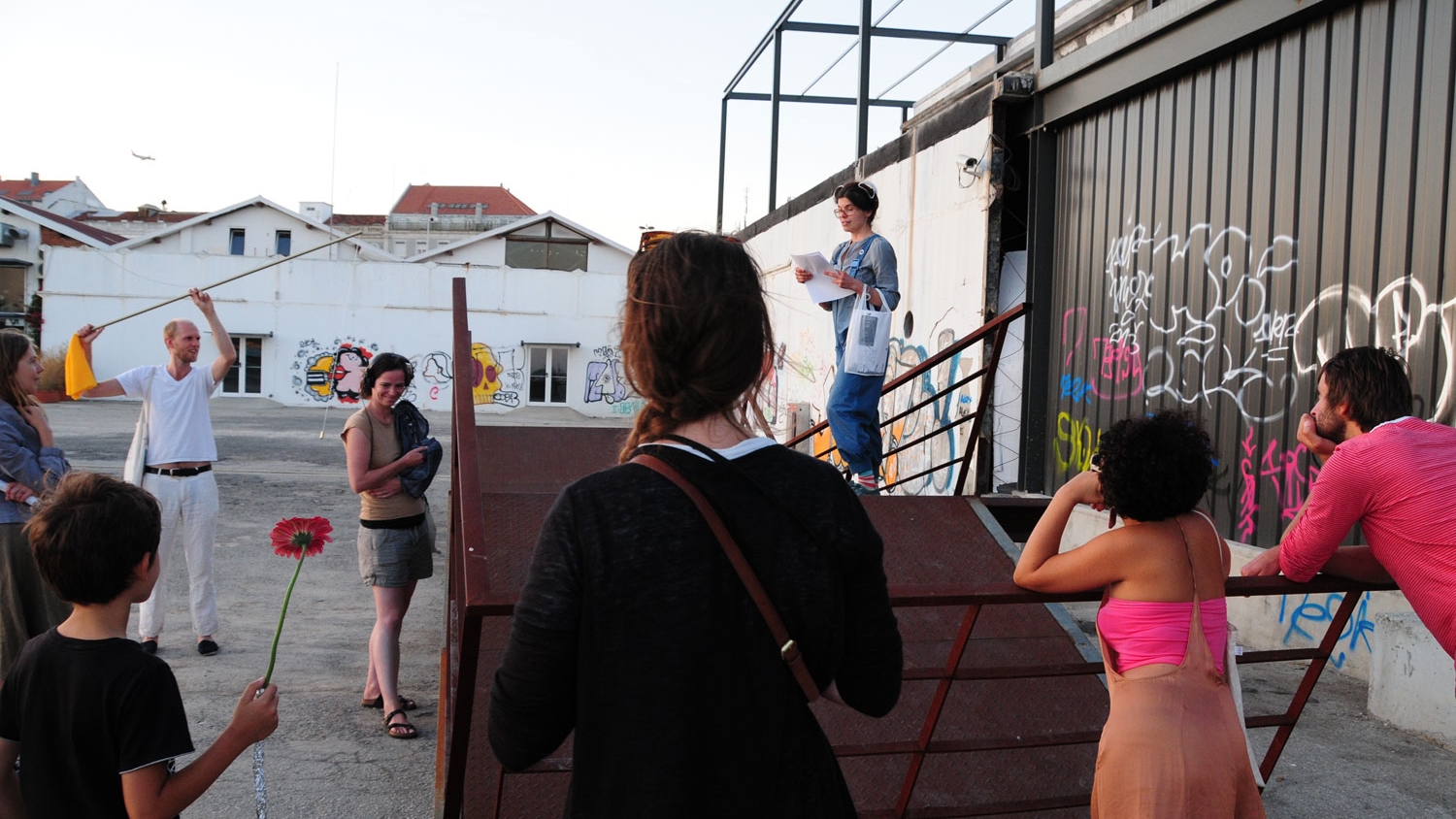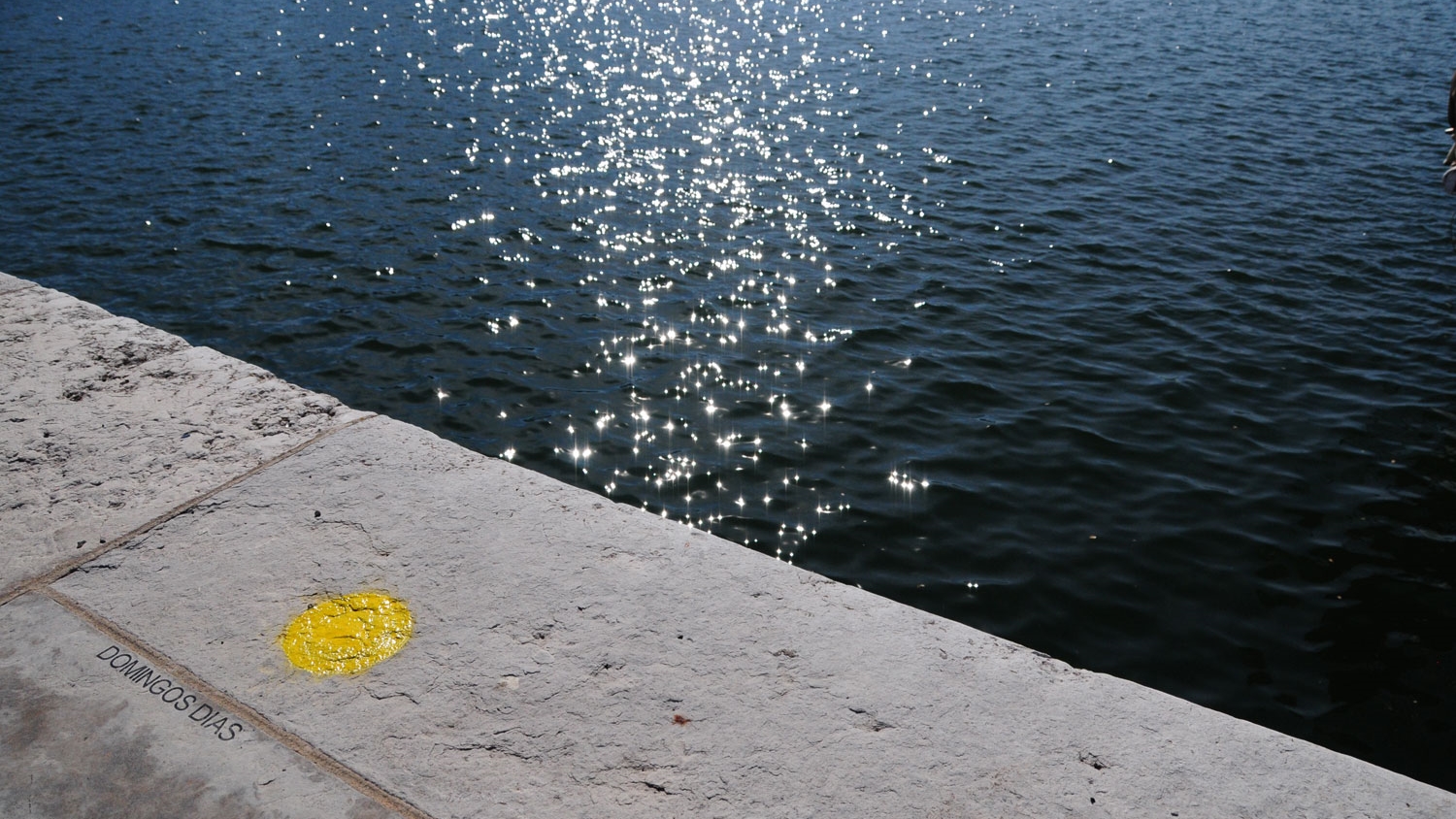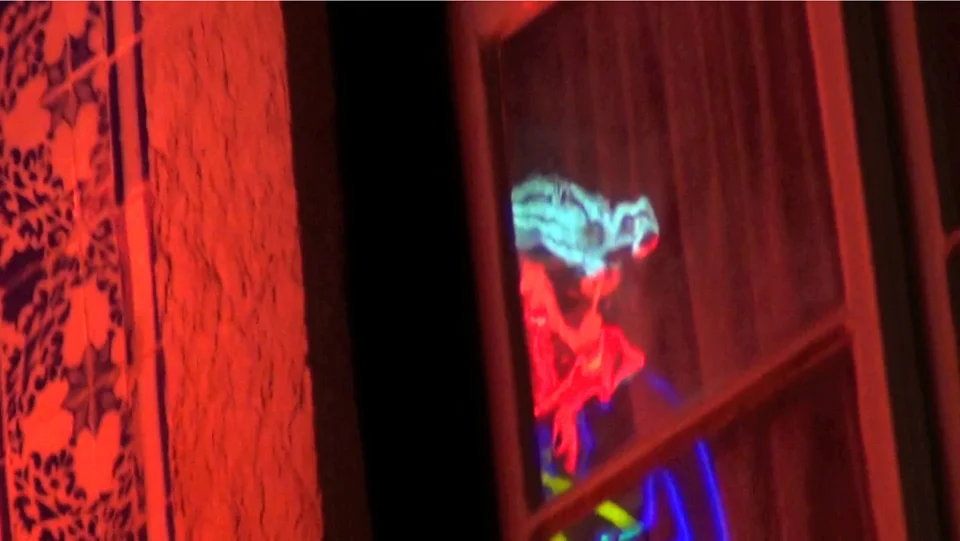Edge City
Lisbon Architecture Triennale - September-December 2013
In Edge City, we explore the maritime edges of Lisbon from the Ponte Vasco da Gama to the Ponte 25 de April near the Alcántara Docks. Operating at a crossover between cultural geography, video documentary and fiction, we interweave spatial, historical, social and political narratives to create an immaterial overlay to the city’s urban fabric. Through this, we tell a story of discovery, encounter and overwhelm.
The work itself consists of three parts. First, a live performance where we guide small groups of people along the maritime edges of the city, working en promenade to tell the story of Edge City throughout the opening weekend of the Lisbon Architecture Trienniale. Second, a video installation constructed on-site at the LX Factory in Lisbon. Installed for the duration of the Lisbon Architecture Trienniale, the 9-channel video installation allows visitors to experience the story of Edge City while looking out over a real-time panorama: the cityscape of Lisbon. Third, a mediated city walk consisting of a series of video downloads as well as a set of instructions leading one along the maritime edges of the city. Here participants are invited to stop at specific points along the journey and listen as the story of Edge City unfolds.
The work was developed for the Lisbon Architecture Triennale 2013, as part of the 'Close...Closer' associated projects selected by Triennale chief curater Beatrice Galilee. An on-line version of the mediated city walk is documented below.
Edge City - Redux
Whitechapel Gallery, London, UK, August 2014
We presented a live, displaced version of Edge City as part of an event entitled 'Modes of Aberrant Research' curated by Holly Pester at The Whitechapel Gallery in London, UK.
Edge City - Mediated City Walk
Virtual Tour
A virtual tour along the maritime edges of Lisbon between Cais do Sodré to Alcántara Mar.
START > Cais do Sodré Station
We begin at the beginning, start at the start. Because don’t all stories have a beginning, middle and end, if not necessarily in that order? So that dot on your map becomes a place in reality: here, just in front of the Terminal Fluvial Building at the Cais du Sodre. From here, this anchor point – indeed, facing it – you begin your journey ...
1 - The Encounter
Turn right and walk down the length of the Terminal Fluvial Building. A boat has just arrived from X. People flood out from all the exits. A man in yellow jogs pas. When you move past the building, walk down the flight of stairs and to your right. There, at the end of the second pier, you will find your first destinatio. There you will stand and listen to the waves, lapping. There you will watch the boats arrive, and then leave again. There two men will be talking and drinking bee. Meanwhile, and elsewhere – up the river to your left at the Parque das Nações – another man will be standing and waiting for THE ENCOUNTER.
1. Portuguese light is like looking into a pool. It contains you. It’s green, yellow, warm … In Portugal you see a long way, far away – forever really. The horizon of the sea is clear, far, far away – it goes on.’ – Paula Rego
2. Communication through colour signals is favoured by advocates of poetry, glass architecture and perpetual motion machinery.
3. Cobalt, indigo, azure, teal, baby, cerulean, ultramarine, sky …
4. In the system of single point perspective, the earth’s curvature is disregarded. The horizon is construed as a straight line, if only in theory.
2 - The Future
Turn around and walk back down the pier. When you reach the start (now the end), turn to your left. Keep following this path along the Cais du Gas for a while. Inside of that club, to your right, a woman is dancing. She will be out all night. Earlier on, and to your left, a man lay sunbathing at the end of the last pie. After the while you will find a juncture: a space between the stunted growth of commerce and the cultivated one of nature. Deviating from the path, turn right toward the horizontal staircase. This is your second destination and here you will find THE FUTURE.
5. See, for example: THX 1138 (1971); 2001: A Space Odyssey (1968); The Jetsons (1962-88); Buck Rogers in the 25th Century (1979-81). See also: https://twitter.com/HistoricalPics/status/367710243943239680/photo/1
6. See Martin Heidegger, ‘The Question Concerning Technology’ in The Question Concerning Technology and Other Essays, trans. William Lovitt (New York: Garland Publishing, 1977): 3-36.
7. The 1998 Lisbon World Exposition, or Expo '98, opened on 22nd May to the theme of ‘The Oceans, a Heritage for the Future’. The Expo closed on 30th September, having received around 11 million visitors and representing 155 countries and organisations. The site reopened in February 1999 as Parque das Nações (Park of the Nations), which includes the original gardens, aquarium, observation tower, funicular and Virtual Reality Pavilion. Other buildings re-purposed for the new use include the Expo’s Sun Door, now a shopping mall; the Utopia Pavilion, now an indoor arena; and the Future Pavilion, now a casino.
8. Archizoom!
3 - The Flood
Return to the path from which you deviated and continue walking. This time, as you do so, pay close attention to the faces. No one is watching you from that tower. No one is sitting on the bench. No one is looking out from any of those windows over there. No one is in any of those car. When at last you find the face that you are looking for, stop. This will be your third destination and here you will experience THE FLOOD.
9. On the morning of 1st November 1755, three seismic shocks passed over Lisbon causing one of the greatest disasters in European history.
10. The thick dust and smoke given off from crumbling buildings left the city in darkness for approximately thirty minutes.
11. Accounts vary in terms of how long the fires that resulted from the earthquake lasted, but suggest anywhere between three days to over a week.
12. Approximately 30,000 residents of Lisbon died within the first two minutes after the earthquake. Many others died in the tsunami that followed. In total, the death toll was around 140,000, which was equal to 61% of the population at the time.
13. Religion was strong in Portugal at the time, and grew even stronger after the earthquake, with many religious orders claiming that the disaster was a form of divine punishment for humankind’s sins.
14. More recently, José Mourinho has been called ‘The Special One’, with reference to the fact that his ancestors survived the Lisbon disaster.
15. Fish do not have eyelids.
4 - The Grid
Continue on the path until you reach the end of the faces. There you will find a shift in the terrain designating a realm of artifice and exclusivity. Will they have arrived yet? They, in their finery? Will they have crossed that threshold into dreamworld? Here, overlooking this false beach, observe an emergence of THE GRID.
16. ‘Contemporariness is, then, a singular relationship with one’s own time, which adheres to it and, at the same time, keeps a distance from it. More precisely, it is that relationship with time that adheres to it through a disjunction and an anachronism.’ –Giorgio Agamben, ‘What is the Contemporary?’
17. ‘That night the blind man dreamt that he was blind.’ – José Saramago, Blindness
18. ‘You, who are blessed with shade as well as light, you, who are gifted with two eyes, endowed with a knowledge of perspective, and charmed with the enjoyment of various colours, you, who can actually see an angle, and contemplate the complete circumference of a Circle in the happy region of the Three Dimensions – how shall I make clear to you the extreme difficulty which we in Flatland experience in recognizing one another’s configuration?’ – A. Square (Edwin A. Abbott), Flatland: A Romance of Many Dimensions
19. ‘The grid’s mythic power is that it makes us able to think we are dealing with materialism (or sometimes science, or logic) while at the same time it provides us with a release into belief (or illusion, or fiction).’ – Rosalind Krauss, ‘Grids’
20. ‘We must cultivate our garden.’ – Voltaire, Candide
5 - The Rhythm
A zone of propriety will keep you from the edge. Instead you must move inland, just a bit. Walk past walls of colourful communication to your right – keep on following the dots. A train passes ahead. The sound of traffic rises as the line of the pine extends. This barrier to your left is high: its heavy mesh marked by a descending metric. Continue along it until you curve into the rush. Now, with the wood pressing up against the gridded metal mesh, is your opportunity to peep through the barrier. Take stock of the dockyard it encloses. Listen to THE RHYTHM it brings forth.
6 - The Excess
Walk amidst the strata of trains, trams and cars as the metrics continue to descend. Perhaps it is mid-day and the light is relentless. Perhaps it is night and you walk in a pack. Perhaps it is dawn, dusk or otherwise liminal and the atmosphere around is aptly in transit. Note the architectural spectrum across the way. Cream. Peach. Blue. Salmon. Yellow. Pink. Less pink. Now stop as you approach the sign to do so, standing stock in the middle of the passage. Look again at the spectrum, or just past it, toward that saintly adoration on high and there, or just behind it – that is, behind those sacred walls – THE EXCESS rages on.
24.
25. ‘The human soul is a madhouse of the grotesque. If a soul were able to reveal itself truthfully, if its shame and modesty didn’t run deeper than all its known and named ignominies, then it would be – as is said of truth – a well, but a sinister well full of murky echoes and inhabited by abhorrent creatures, slimy non-beings, lifeless slugs, the snot of subjectivity.’ – Fernando Pessoa, The Book of Disquiet
26. ‘Whores or lesbians, we do not care what they call us, as long as the battle is fought and not lost . . . Enough. It is time to cry “Enough!” and to form a block with our bodies.’ – The Three Marias, The New Portuguese Letters
7 - The Ship
Turn left at the next opportunity and you will find yourself at zero. A man is sitting inside of a glass box. Approach him to enquire:
Q: What time is it?
A: ____________
When the time is right, embark on THE SHIP.
27. The Age of Discovery (also known as the Age of Exploration) was a period starting in the early 15th century and continuing to the 17th century. During this period Europeans explored Africa, the Americas, Asia and Oceania.
28. The route from Europe to the Indian Ocean via the Cape of Good Hope was pioneered by the Portuguese explorer navigator Vasco da Gama in 1498, resulting in new maritime routes for trade.
29. Spices such as cinnamon, cassia, cardamom, ginger, and turmeric were used for commerce.
30. ‘He who controls the spice controls the universe.’ – Frank Herbert, Dune
8 - The Revolution
Turn around to take your leave. Before you know it, you will already arrive in the meadow. Trees drop debris in the slanting light. You would like to stay for a while, to sit on that rock and observe the light (as you do so, look up at the hole in the grid – this small detail says so much about the confrontation between two orders) but it is time to return to the edge. So move now out of tranquillity toward the incendiary door and enjoy THE REVOLUTION or die.
31. On the 25th April, 1974, a military coup began in Lisbon that saw the overthrow of the Estado Novo and, with it, the end of António de Oliveira Salazar’s 50-year dictatorship. Called the Carnation Revolution after civilians stuffed carnation flowers into the barrels of triumphant soldiers’ weapons, the movement would lead to the withdraw of Portugal from its African colonies.
32. 'A paradox. If one wants to govern the world, one must renounce governing: the un-governing of the world'. - Georges Bataille
9 - Domingos Dias
Back to the dots. A pile of purple clothes indicates someone’s entire belonging. Follow them around the wall. It clear that you have reached the edge. Stand here looking out at the bridge to hear the story of DOMINGOS DIAS.


